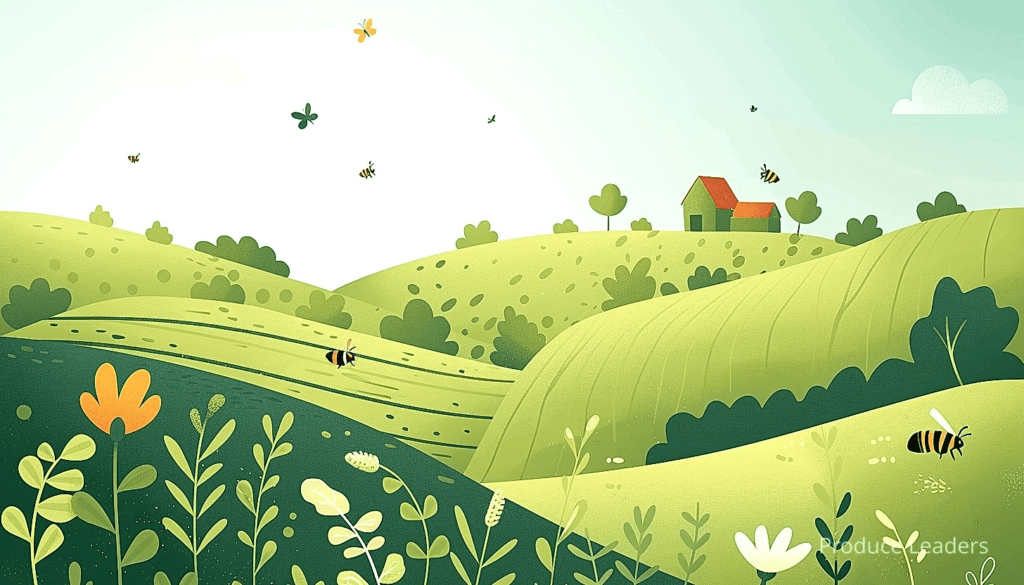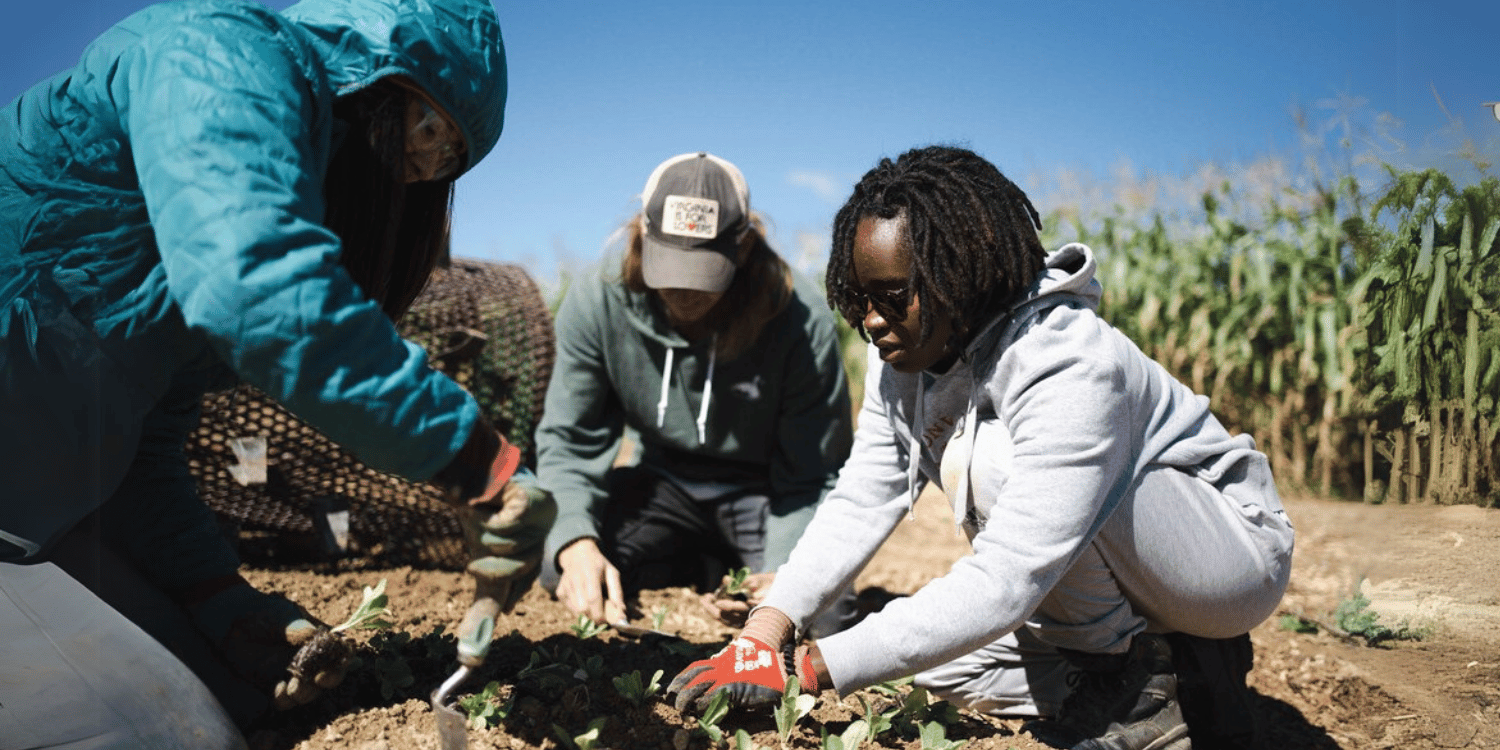Cross-pollination in crops offers several benefits that enhance agricultural productivity.
Firstly, it promotes genetic diversity, thereby improving the resilience of crop varieties to pests, diseases, and changing environmental conditions.
In addition, cross-pollination can lead to increased yields due to the exchange and merging of superior plant traits.
Moreover, it allows for novel and beneficial traits to be bred into crop populations, ultimately leading to improved taste, size, or shelf-life of the produce.
Furthermore, the resulting genetic diversity contributes to the overall health of the ecosystem by fostering more dynamic and resilient plant communities.
In brief, cross-pollination in crops plays a important role in the advancement and security of global agricultural systems.
- Cross-pollination introduces a significant level of genetic diversity to crops.
- Improved pest and disease resistance can be achieved via cross-pollination.
- Cross-pollination can enhance crop yields and foster superior traits.
- Through cross-pollination, the taste of crops can be improved and shelf-life extended.
- Cross-pollination positively impacts ecosystem health and global agricultural security.
While cross-pollination benefits hold a major spot in enhancing crop yields and genetic diversity, there’s more to unravel about its broader implications.
In the upcoming sections, you can look forward to a deeper understanding of the intricate science behind this natural, yet critical process.
It also opens up insights into how cross-pollination serves a key role not only in improving our food quality but also in contributing to a healthier ecosystem.
Take your time as we break it down further, to give you a clearer view on how cross-pollination forms the backbone of our agricultural and ecological security.
Contents
- What Is Cross-Pollination?
- Why is Cross-Pollination Necessary?
- Benefits of Genetic Diversity
- Role in Pest and Disease Resistance
- How does Cross-Pollination Improve Yields?
- Breeding Superior Traits via Cross-Pollination
- Can Taste be Improved by Cross-Pollination?
- Cross-Pollination’s Effect on Shelf-Life
- Impact on Ecosystem Health
- Security of Global Agricultural Systems
- The Bottom Line
What Is Cross-Pollination?
In Short: Cross-pollination, or allogamy, is the transfer of pollen grains from the male part of a flower to the female part of a different plant of the same species, promoting genetic diversity and resilience. This process occurs through natural vectors including wind, water and insects, which play vital roles in maintaining rich genetic diversity and enhancing the productivity of ecosystems and crops.
Often, when we discuss agriculture and plant reproduction, the term cross-pollination comes up.
But, what exactly does it entail?
Firstly, let’s define the process. Cross-pollination, also known as allogamy, refers to the transfer of pollen grains from the anther (male part) of a flower to the stigma (female part) of a flower of a different plant of the same species.
This process is contrasted against self-pollination, where pollen grains are transferred within the same flower or between flowers of the same plant. Self-pollination is safe, isn’t it?
Yes, it is!
However, cross-pollination has its unique benefits over self-pollination. It leads to genetic diversity among plants, which increases their resilience to pests, diseases, and changes in environment. Variety is the spice of life, isn’t it?
Now that we understand the process, let’s dig in into how cross-pollination occurs, after all, plants can’t move around to distribute their pollen.
Cross-pollination happens through a variety of natural avenues, including wind, water and insects. These carriers are known as vectors. Have you ever stopped to consider insects buzzing around flowers as part of a grand plan in nature?
Think about it, the humble bee plays a crucial role in the life cycle of plants.
Another fascinating point about cross-pollination lies in the interaction between plants and their pollinators. Indeed, evolution has crafted a clever symbiotic relationship in which both parties benefit. Isn’t this a fantastic model of natural cooperation in action?
Before diving into the critical benefits of cross-pollination, let’s review the types of cross-pollination. These are categorized based on the vectors involved.
The different types of cross-pollination are:
- Entomophily: Pollen transport by insects.
- Ornithophily: Pollen transport by birds.
- Anemophily: Pollen transport by wind.
- Hydrophily: Pollen transport by water.
Each type has its unique characteristics and is more common in some species and environments over others. For instance, wind plays a significant role in cross-pollinating grains like wheat and corn, whereas insects predominantly cross-pollinate flowers.
Keep in mind, though, that all these mechanisms contribute to the rich genetic diversity in our plant life. Does it now make you view a windy day or a buzzing bee in a new light?
Well, it surely should. Their significance goes beyond mere aesthetics or occasional annoyance.
At its core, cross-pollination is a fundamental aspect of plant biology and agriculture. It aids in creating healthy, diverse ecosystems and enhancing crop productivity, thereby largely influencing our daily lives.
Pro Tip: Cross-pollination, which increases genetic diversity and resilience in plants, occurs through various natural methods such as wind, water, and insects.
Lastly, isn’t it remarkable how these complex, natural processes go largely unnoticed in our everyday lives, yet they profoundly affect the world around us?
Indeed, it gives us pause, showing us the intricate web of interdependence weaving the tapestry of life on Earth.
Why is Cross-Pollination Necessary?
In Short: Cross-pollination is crucial for fostering biodiversity and enhancing crop yield by introducing new traits to plants and improving their resistance against pests, disease, and changing environmental conditions. Besides boosting food production, this natural process also benefits environmental health by aiding carbon sequestration, thereby helping to mitigate climate change.
The necessity of cross-pollination might not always be immediately apparent. Yet, when we dig in into the details, we begin to see its immense benefits for our agricultural system.
At its most basic level, cross-pollination is a natural process that helps in the production of offspring plants. This process is indeed a wonder of nature, isn’t it?
Furthermore, cross-pollination is integral to biodiversity. Why, you might ask?
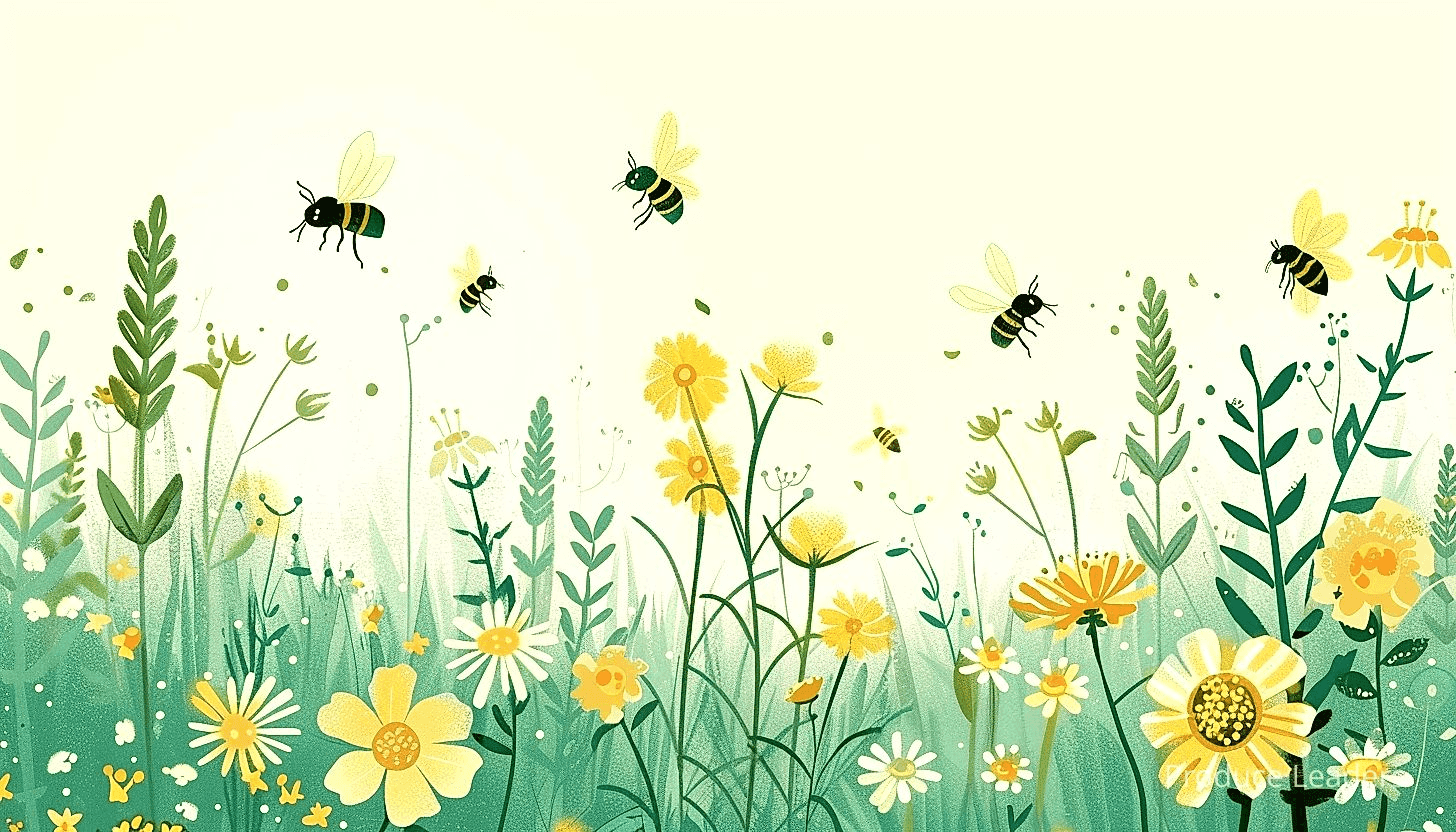
It is primarily through cross-pollination that plants acquire new traits and characteristics. In fact, it’s crucial for the evolution and adaptation of plants.
Take into consideration a world without cross-pollinated plants. How would that look, you may wonder?
In such a scenario, we’re looking at a significant reduction in the variety of plants. This could have cascading effects on the food chain and the ecosystem.
A compelling point to note about cross-pollination is its role in increasing crop yield. It’s interesting to understand that cross-pollination fosters the growth of healthier, more productive plants.
Now, you might be asking, how exactly does it aid in boosting crop yield?
We’ll dig in into the reasons by discussing the main factors below:
- The spread of pollen by wind or insects leads to fertilization and ultimately better seed production.
- Cross-pollinated plants are often more resistant to pests and disease, thereby reducing crop loss and increasing productivity.
- The genetic diversity resulting from cross-pollination enhances crop resilience against changing environmental conditions.
Put simply, cross-pollination leads to healthy, robust crops that can increase yield and contribute to food security.
Is it all about just food production and genetics, though?
Not at all. A lesser-known, yet equally important aspect of cross-pollination is its benefit to our environmental health.
How does that work?
Well, the process of cross-pollination indirectly aids in carbon sequestration. Healthier plants are often better at capturing and storing carbon dioxide, thereby helping mitigate climate change.
Now, isn’t that a fascinating fact?
Important: Cross-pollination is a natural process integral to biodiversity, enabling plants to acquire new traits and characteristics, which is crucial for their evolution and adaptation, resulting in a variety of plants and contributes to increasing crop yield and food security.
Indeed, the necessity of cross-pollination extends far beyond just our farms and dinner tables.
As we can see, the implications of the process are vast. Cross-pollination is, in fact, a fundamental player in our biodiversity, agriculture, and environmental preservation.
Benefits of Genetic Diversity
In Short: Genetic diversity plays a significant role in improving crop yield, disease resistance, and adaptation by building resilience within crops. Modern agricultural practices benefit from this diversity, with technologies like selective breeding capitalizing on these diverse traits to develop stronger, more productive crops.
How often do we contemplate the central role played by genetic diversity within cultivation? Can you recall the last time you bit into an apple, and pondered on the variety of apple trees that exist?
We are surrounded by examples of nature’s vast array. Yet, many of us overlook the critical importance of maintaining this biodiversity within our agricultural systems.
Getting into the subject, the primary benefit of genetic diversity is the resilience it offers. Redefining the age-old saying, this is clearly a situation where putting all your eggs in one basket is not advised.
When a crop population is genetically diverse, it finds the courage to fight off pests, diseases, and match up to varying environmental conditions.
A little ponderance and it would be clear as day that genetic diversity within crops means healthy and resilient harvests. But how does this happen?
Before we dig in into this, let us consider this simple list detailing the significance of genetic diversity for agricultural fields:
- Improved Crop Yield: Diverse genetic traits in crops may result in higher yields.
- Disease Resistance: Greater genetic diversity often aids in combating different diseases.
- Expanded Adaptation: Crops with diverse genetics can thrive in a variety of environments.
Getting back to our question, the diversity of genetic traits offers different resistance characteristics. It means that a genetically diverse crop population will have a portion of its population resistant to specific threats.
If one crop variety is susceptible, it’s likely that a different one proves resistant. Some crops even have the ability to evolve their genetic properties to develop resistance, providing a more proactive defense.
Isn’t it amazing how the same variety, grown in a different part of the world, can exhibit different genetic characteristics due to cross-pollination?
Speaking of cross-pollination, let’s not forget it’s a natural process that adds to the genetic soup. The process mixes different varieties and, in turn, contributes to their strength and resilience.
Cross-pollination is nature’s way of maintaining genetic diversity and ensuring the survival of species against the odds. But how does this relate to advancements in technology?
Modern breeding techniques allow us to select specific traits and develop new varieties. It’s similar to cross-pollination, but in a laboratory setting!
Pro Tip: Maintaining genetic diversity in crops is critical for agricultural resilience, improving yield, disease resistance and adaptability to different environments.
Without the basis of genetic diversity, breeding for higher yield, disease resistance, or any other desirable trait would be practically impossible.
We’re indeed lucky to have such an intricate process. Do you ever wonder how our green world would look if we didn’t have genetic diversity among our crops?
Role in Pest and Disease Resistance
In Short: Cross-pollination enhances genetic diversity in crops, equipping them with diverse traits for robust resistance to pests and diseases. This process reduces the susceptibility of plants to diseases and pests, conferring variation in defense compounds and physical attributes and fostering ‘hybrid vigor’.
Are you aware of the important role cross-pollination plays in enhancing the resistance of crops against pests and diseases? The fascinating thing about cross-pollination is how it enhances the genetic diversity of plant populations.
Ever wondered why diversity is critical? It’s simple, really. By increasing genetic diversity, cross-pollination introduces a wide range of traits that enable plants to grasp resilience against pests and diseases.
What does this imply? Essentially, it means that through cross-pollination, the probability of a disease or pest wiping out a whole plant species is significantly reduced. This is because not all individuals in the species would be equally susceptible.
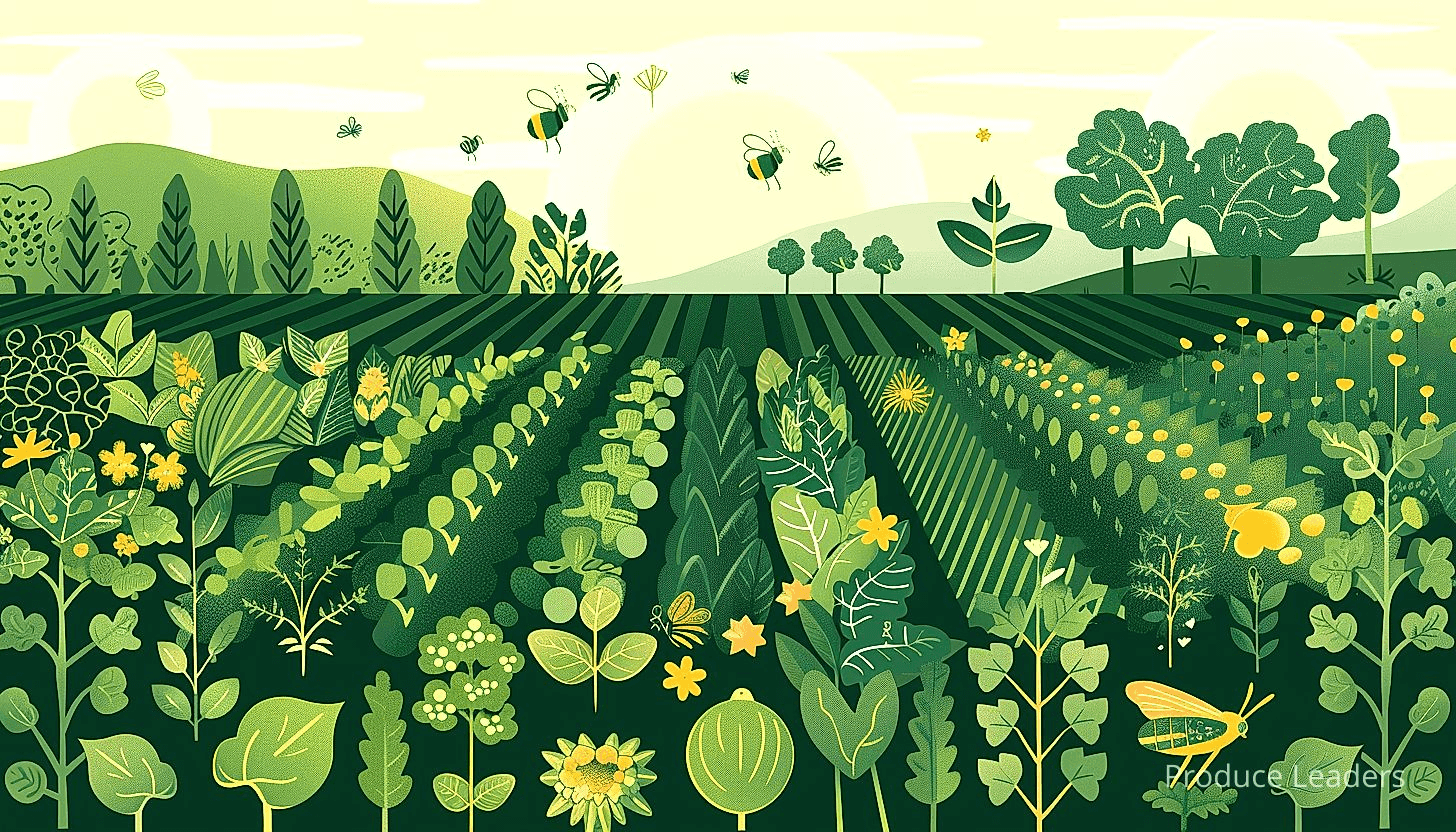
Want to know how exactly cross-pollination achieves this? Let’s dig deeper. The variation brought about by cross-pollination within a given species imposes a challenge on pests and diseases.
What sort of challenge? Well, even if a pest can effectively attack some plants within a species, others with different genetic makeup might prove resistant. Isn’t this remarkable?
Now let’s outline some of the ways in which this cross pollination fosters resistance to pests and diseases:
- Variation in defense compounds: Different cross-pollinated plants can produce different defense compounds that deter pests.
- Diversity in physical attributes: Changes in physical attributes can make it harder for pests or pathogens to infect plants.
- Heterosis: Cross-pollinated plants often exhibit ‘hybrid vigor’, displaying better resistance to pests and diseases when compared to inbred plants.
Certainly, the benefits of cross-pollination can’t be understated. The increased genetic diversity not only hinders the dominance of one particular pest or another but likewise bolsters the chances of survival for a majority of individuals within plant populations.
Important: Cross-pollination plays a crucial role in enhancing the resistance of crops against pests and diseases by increasing the genetic diversity of plant populations, introducing a variety of traits that enable resilience, and reducing the probability of a disease or pest wiping out an entire plant species.
Now, does this imply that cross-pollination is the ultimate solution to all agricultural pests and diseases? Of course not. It’s just one of the strategies nature uses to ensure survival.
This might lead you to ask, are there other ways crop species have developed resistance to pests and diseases? Certainly, but that is a topic for another day. Let’s continue to explore the wonders of cross-pollination and its impact on the precious world of agriculture.
How does Cross-Pollination Improve Yields?
In Short: Cross-pollination, facilitated by factors such as bees, birds, wind and water, not only significantly impacts our food security but also boosts crop productivity through enhanced genetic diversity, the adoption of favorable characteristics and production of larger seeds and more consistent fruits. This integral process also promotes crop disease resistance and adaptability, ensuring a robust agricultural industry and improved marketability.
When it comes to crop production, the process of cross-pollination plays a critical role. Would you believe me if I tell you that this process significantly affects our food security?
Cross-pollination isn’t achieved without assistance. Can we credit the bees, birds, wind and even water?
Indeed, through acting as pollinators, these elements aid in the transfer of pollen from one flower to another. This assistance initiates the process of fertilization in plants.
And what comes after the fertilization process? We see the formation of seeds, fruits and essentially new plants. This ensures crop diversity and leads to improved yields, don’t you think?
Let’s dig in into how cross-pollination contributes to improved yields in a bit more detail.
Here’s a small list of reasons that illustrates how cross-pollination boosts the productivity of crops:
- The adoption of favorable characteristics
- Enhancement in the genetic diversity of plants
- Fruits bearing heavier and larger seeds are produced
- The formation of fruits is more consistent
Did you know the interaction between cross-pollination and productivity is reciprocal? The more extensive the cross-pollination, the better the harvest.
This increased productivity is most certainly due to the exchange of genetic material between different plants. Amazing, isn’t it?
And what else do we get from the exchange of genetic material? We also get an increased genetic diversity within the crop population.
And why is genetic diversity desirable? It equips crops with the ability to resist various diseases pests and cope with change.
How about an example? Consider the Irish potato famine. A significant part of the issue was the lack of genetic diversity in the potatoes that were being cultivated.
Interestingly, this genetic diversity further allows the plants to adapt to varying climatic conditions and promote endurance. Now, isn’t that something to ponder on?
Furthermore, cross-pollination is often seen resulting in larger, heavier seeds. What does this mean for us? The truth is that crops with larger seeds tend to have higher germination rates.
Finally, there’s a more consistent formation of fruits. Cross-pollinated plants often produce more uniform, better-quality fruits. This paves the way for improved marketability and revenue.
Can we thus deduce that cross-pollination is an integral part of our daily lives? It not only ensures food security but also a robust agricultural industry.
Breeding Superior Traits via Cross-Pollination
In Short: Plant breeders utilize cross-pollination to enhance beneficial traits and suppress undesirable ones in plants, focusing on improvements such as disease resistance and nutrient uptake. The goal is to create new, superior plant varieties that are not only more vibrant and tasteful but also more robust and easy to grow.
Let’s talk about the dynamics of cross-pollination. Plant breeders are indeed artists in their own right.
They craft and create, perfecting nature’s raw materials.
Their canvas is the plants, and their brush is the pollen.
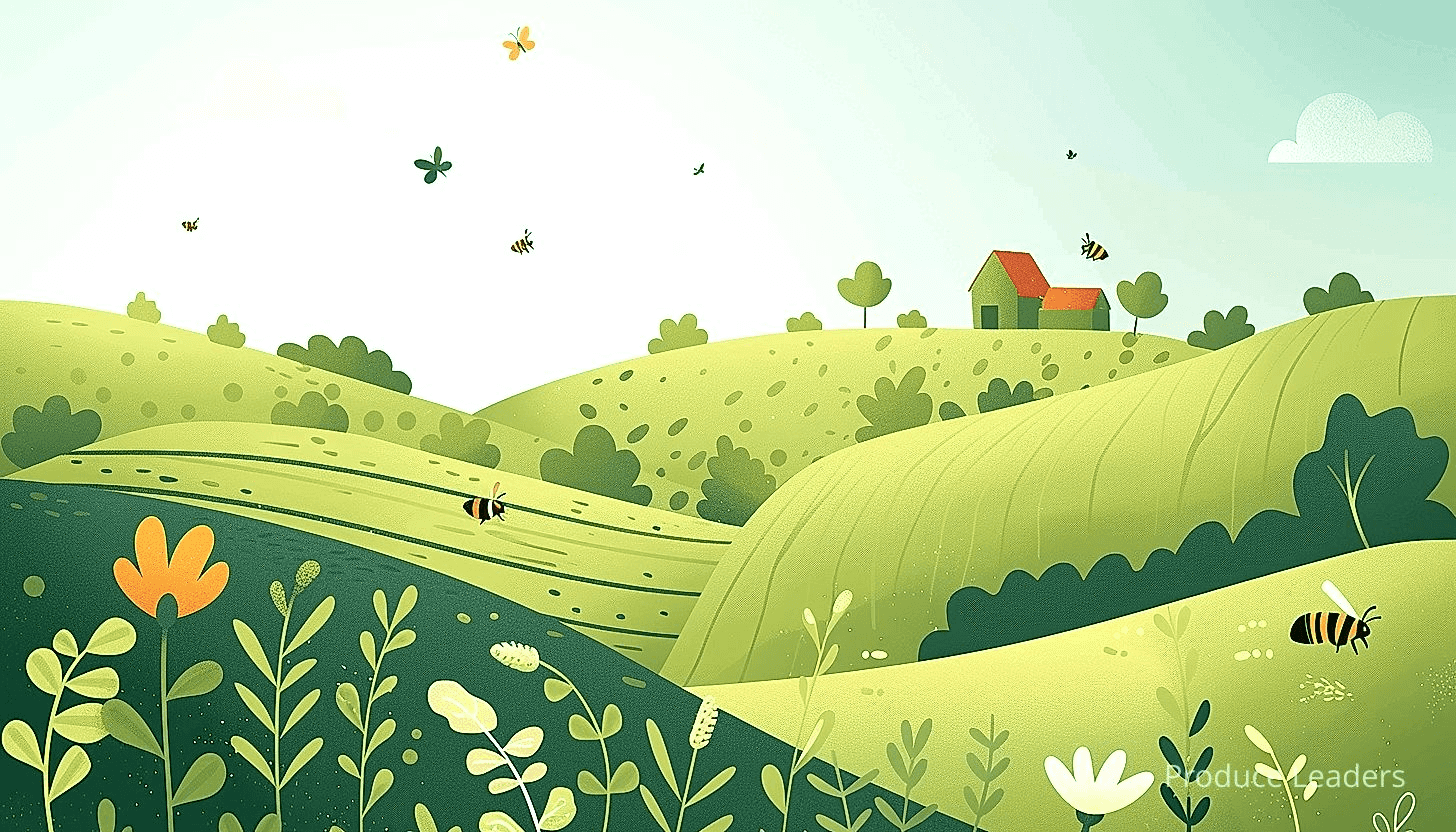
Through cross-pollination, they can explore, experiment, and enhance.
They create new plant varieties that are stronger, more vibrant, and better equipped to thrive.
But how do they achieve this with cross-pollination?
Let’s dive deeper into it by discussing some significant advantages.
Here’s the list of the major traits that these plant breeders focus on:
- Improved Disease Resistance
- Enhanced Nutrient Uptake
- Increased Yield
- Better Taste and Texture
- More Vibrant Colours
Does crossing different plant species only bring benefits?
Certainly, some might take issue with this notion.
However, remember that the purpose is not for the creation of a new species altogether.
Instead, the aim of cross-pollination is to bikld a better version of the existing ones.
The goal is to enhance the beneficial traits and suppress the undesirable ones.
This process isn’t purely reliant on the randomness of natural pollination.
No, this is a science—an art, meticulously and conscientiously processed towards perfection.
Therefore, despite the potential drawbacks, it is, after all, a pursuit of betterment.
Does the idea of breeding superior traits via cross-pollination still seem too abstract?
Think of it this way.
Imagine you are a baker, always striving for that perfect loaf of bread.
You combine the best quality ingredients, experiment with various baking techniques, and adjusting the baking time and temperature on your oven.
And finally, one day, you create a loaf that is superior in taste, structure, and aroma.
Let me tell you, in much the same vein, plant breeders use the process of cross-pollination.
Creating, refining, improving.
Their goal is to develop plants that can better resist pests, disease and have an improved nutrient uptake.
Plants that not only look beautiful and taste good but are also easy to grow and harvest.
Isn’t that a wonderful goal to strive for?
Pro Tip: Cross-pollination can be a useful tool in plant breeding to develop superior traits such as improved disease resistance, enhanced nutrient uptake, increased yield, better taste, texture, and more vibrant colors.
Next time you appreciate the vibrancy of the plants or the robustness of the crops.
Remember to give a nod to the tremendous artistry and science that is cross-pollination.
Can Taste be Improved by Cross-Pollination?
In Short: Cross-pollination improves the taste of crops by enhancing their genetic diversity, with many horticulturists deliberately inducing this process for better-tasting harvests. In addition to enhancing flavor, cross-pollination affects the texture of fruits and supports sustainable farming by boosting genetic diversity and crop resilience.
Cross-pollination, a natural process in plants, has far-reaching benefits. One such benefit that we often overlook is how it influences the flavour profiles of our beloved crops.
The answer to whether cross-pollination can improve taste is – yes, indeed!
Let’s dig in into the mechanism to better understand this complex process. But, can we visualize the complexity behind every juicy, sumptuous fruit we take a bite out of?
When pollen from one plant lands on the reproductive organ of another plant, cross-pollination occurs.
Genetic diversity is thus enhanced, which amongst myriad benefits, contributes to improvements in taste. Essentially, it’s the way nature remixes the genetic code of fruits, vegetables, and even nuts!
Are we taking a moment to marvel at the magic and beauty of this natural process?
The improvement in taste is not merely a collateral benefit. It’s rather a process targeted by many horticulturists and farmers. They deliberately induce cross-pollination to achieve a better-tasting crop.
Seeing it in action might bring a handful of surprises.
Want a sneak peek into some improvements brought by cross-pollination? Below is your quick guide:
- Strawberries inch closer to that perfect balance between sweet and sour.
- The flavor of almonds evolves from bitter to sweet.
- Apples grow bigger and tastier.
- Corn, one of the most crucial staple crops, gains a deeper, sweeter taste.
Hard to believe, isn’t it?
Cross-pollination doesn’t just stop at improving taste. It’s interesting to note how it affects the texture of the fruits. Have you ever wondered why some peaches are fuzzier, and some apples are more crisp?
Yes, you guessed it right!
A journey that began with enhancing taste now seems to be touching even texture.
Moreover, cross-pollination isn’t just about multiple tastes and textures. The boosted genetic diversity can make crops healthier, leading to bolstered resilience against pests or diseases. Isn’t it amazing how boosting taste can indirectly support sustainable farming?
At this point, it’s fair to ponder if in pursuit of better taste, are we losing some tastes and textures distinctive to certain regions or cultures?
Possible, yes. But looking at the bigger picture, the future flavors presented by cross-pollination might perhaps become a part of our culinary tradition in the coming years.
Important: Cross-pollination in plants contributes to improvements in the taste of crops by enhancing genetic diversity, a process many horticulturists deliberately induce to yield better-tasting crops.
Finally, the role of horticulturists, farmers, and agronomists is deserving of our applause. They are the ones who plant those trees, maintain those orchards, and invest time and effort into enhancing food quality.
Cross-pollination in crops surely deserves more recognition than it currently receives. Will spreading awareness about it help in appreciating the often-overlooked aspects of our food?
Cross-Pollination’s Effect on Shelf-Life
In Short: Cross-pollination facilitates genetic diversity in crops which can enhance traits like disease resistance and physical robustness, extending their shelf-life. Factors such as acidity content, firmness, and pest resistance can improve from cross-pollination, optimizing storage properties and commercial viability of produce.
Have you ever wondered why certain fruits and vegetables seem to last longer on the shelves compared to others? It’s not magic, it’s due to the genetic diversity brought about by cross-pollination!
Yes, that’s right! Cross-pollination can positively influence the shelf-life of various crops.
Crops that are cross-pollinated tend to have a higher resilience against environmental factors. This resilience can extend to their post-harvest life, thus enhancing their shelf-life. Now, isn’t that interesting?

You may be thinking, what’s the deal with genetic diversity? Well, here is where the magic happens.
Cross-pollination involves the transfer of pollen from one flower to another of a different genotype. This process fosters genetic diversity among plant populations.
By mixing up the genes of different plants, cross-pollination helps to create a genetic ‘cocktail’ that can potentially include traits such as enhanced disease resistance and tougher physical characteristics, both of which can result in a longer shelf-life for the produce.
But, cross-pollination’s effect isn’t restricted to these traits. Let’s go further!
Cross-pollination can also result in crops with better storage properties. To outline a few advantages conferred by cross-pollination on the crops’ storage properties, consider the following:
- Acidity content: Cross-pollinated crops often have optimum acidity levels, aiding in longer preservation.
- Firmness: The physical traits of these crops can be enhanced, resulting in harder fruits that are less likely to spoil quickly.
- Resistance to pest: With higher genetic diversity, the crops have enhanced resistance against pests, reducing the risk of spoilage.
These characteristics endow the cross-pollinated crops with an evolutionary edge, leading to increased shelf-life and better commercial viability.
Now, one could ask – Do all cross-pollinated crops have an increased shelf-life? Well, the answer, in fact, is dependent on the species of the plant and the traits of the parent plants.
Pro Tip: Cross-pollination enhances genetic diversity in crops, leading to traits like enhanced disease resistance and tougher physical characteristics, which can increase their shelf-life and commercial viability.
Just imagine, isn’t it fascinating to understand how natural processes like cross-pollination can have such a significant impact on our daily lives, especially on something as integral as the food we consume?
Well, the journey doesn’t end here, the scope and effects of cross-pollination extend even further! With continuous advancements in the field of plant genetics and breeding, who knows what exciting discoveries the future holds in improving the shelf-life and quality of our fruits and vegetables?
Impact on Ecosystem Health
In Short: Cross-pollination in crops enhances plant productivity and maintains biodiversity, thus playing a crucial role in ecosystem health. This agricultural technique increases genetic diversity, improves resilience, amplifies ecosystem stability, and helps sustain overall environmental wellbeing.
The practice of cross-pollination in crops significantly impacts ecosystem health. How so?
This agricultural strategy not only enhances the productive potential of plants but also maintains biodiversity.
Biodiversity, the variety of life in the world or in a particular habitat or ecosystem, sounds like a decent metric to measure ecosystem health. Isn’t maintaining biodiversity in our agricultural practices necessary?
It absolutely is.
Biodiversity not only ensures the sustainability of the ecosystem but also guarantees resilience to changes.
Plant communities enriched through cross-pollination demonstrate a higher degree of resilience in the face of environmental perturbations.
These communities can handle changes, be they climate conditions, pests, or diseases, with much more ease than a monoculture field.
Let’s now look at the specific benefits that cross-pollination brings in fostering stronger ecosystems.
- Increased plant genetic diversity: Cross-pollination encourages the creation of offsprings with varied genetic traits.
- Improved resilience: With a diversified genetic pool, crops are more resilient to pests, diseases, and climate changes.
- Enhanced ecosystem stability: Greater species diversity ensures stability and sustainability of the ecosystem.
Isn’t that impressive?
Agricultural methods that prioritize all living species strengthen our ecosystems.
With the choice of cross-pollination, we do not merely focus on the crops alone.
We consider the overall health of the wider ecosystem, including birds, insects, and other pollinators who interact with and rely on those crops.
Isn’t it essential to keep in mind that healthy ecosystems house healthy crops?
It appears that crop cross-pollination is much more than just a method to acquire quality plant produce.
Cross-pollination, as we’ve seen, is an effective technique for enhancing crop yield.
But it takes the process a step further, concentrating on the overall wellbeing of the environment.
It encourages us to think beyond the individual plant and look at the complete ecosystem health.
Cross-pollination acts as a protector, enhancing biodiverse systems and providing robustness against environmental changes.
Now, isn’t it clear that fostering ecosystem health goes beyond just preserving the environment?
It’s a part of maintaining crop productivity and ensuring the sustainability of our agricultural practices.
This practice allows us to be more responsible stewards of our planet while simultaneously enjoying bountiful and diverse harvests.
While we talk more about the benefits of cross-pollination, the impact it bears on ecosystem health cannot be overlooked.
Can we afford to ignore the need for healthier ecosystems?
Important: Cross-pollination in agriculture not only enhances the productive potential of plants but also maintains biodiversity, ensuring the sustainability of the ecosystem and providing robustness against environmental changes.
I believe the response is a resounding no.
The focus must remain on preserving and promoting ecological health, and crop cross-pollination plays a important role in this endeavor.
Security of Global Agricultural Systems
In Short: Cross-pollination plays a critical role in global agricultural systems by ensuring crop resilience and biodiversity. Without it, our food security and the health of global ecosystems would be at risk.
Let’s take a moment to talk about the enormous role cross-pollination plays in securing our global agricultural systems. It’s a process that, quite literally, ensures our crops continue to grow.
Not just that, it is responsible for the survival and sustainability of numerous plant species. Reflect on this – without cross-pollination, would we even have such biodiversity in our crops?
One key benefit of cross-pollination to agricultural systems is genetic diversity. It’s simply fascinating how genetic diversity contributes to crop resilience, isn’t it?

A crop that lacks genetic diversity might be more vulnerable to diseases or pests. But a crop with varied genetic material has a higher chance of withstanding such challenges. Imagine, if all our crops were genetically identical, wouldn’t a single disease potentially wipe them all out?
Therefore, cross-pollination is not just an interesting natural phenomenon; it’s a lifeline for our global foods. It creates stronger, more resilient crops that can withstand a variety of threats.
Moreover, it’s worth noting the variety in flavors, colors, and textures seen in our food due to cross-pollination. Would our meals be as exciting and diverse without it? Probably not.
We might take for granted the multitude of crop varieties available to us. However, let’s consider some of the incredible benefits cross-pollination provides:
- Greater resilience to pests and diseases
- Enhanced natural vigor and yield of crop varieties
- Increased biodiversity of plant species
- Improved flavor and color diversity in crops
A world without cross-pollination would entail a lack of genetic diversity and would dramatically impact our foods. We would have poorer crop production, less resilient plants, and ultimately, more monocultures.
This sort of scenario wouldn’t bode well for the health of our global ecosystems, would it? Indeed, it could even jeopardize our food security.
Therefore, understanding the significance of cross-pollination becomes important. It’s not just pertinent to preservation of biodiversity, but equally so to our own food security and sustainability. You’re aware now, aren’t you?
Moving forward, let’s keep in mind these invaluable benefits next time we see a bee buzzing from flower to flower. After all, they are one of the key players in the wonderful world of cross-pollination. They’re contributing towards a stronger, more secure global agricultural system.
Overall, cross-pollination represents a miraculous natural process important not just for nature, but for us too. It helps maintain a healthy and robust agricultural system for all humanity to benefit from. Truly amazing, isn’t it?
The Bottom Line
Cross-pollination holds an essential role in the propagation and survival of various crop species as it encourages genetic diversity and contributes to a healthier, more sustainable ecosystem.
The necessity of cross-pollination in agriculture stems from its ability to facilitate genetic diversity, leading to variations among plant species and promoting overall resilience and survival.
Genetic diversity, a direct result of cross-pollination, provides numerous benefits including increased adaptability, resilience, and potential for adaptation in changing environmental conditions.
By promoting genetic diversity, cross-pollination plays a significant role in enhancing pest and disease resistance among plant species, ultimately leading to healthier crops and more stable food production.
Cross-pollination is a natural process that has the potential to improve crop yields by ensuring the survival and propagation of the most resilient and adaptive plant species.
Through cross-pollination, breeders can propagate superior traits across crop varieties, reaping benefits such as improved yield, pest resistance, and adaptability to different environmental conditions.
By influencing genetic diversity and promoting the transfer of desirable traits, cross-pollination can also enhance the flavor of different crops, contributing to a richer, more diverse agricultural produce.
Furthermore, cross-pollination can impact shelf-life, a critical aspect of commercial agricultural produce, given that longer shelf-life can reduce food waste and improve food security.
By fostering a rich and diverse ecosystem, cross-pollination also contributes significantly to overall ecosystem health, leading to more sustainable agricultural practices.
Lastly, considering the high dependency of modern agriculture on a few crop varieties, cross-pollination plays a crucial role in securing global food systems by promoting diversity and resilience among crop species.

